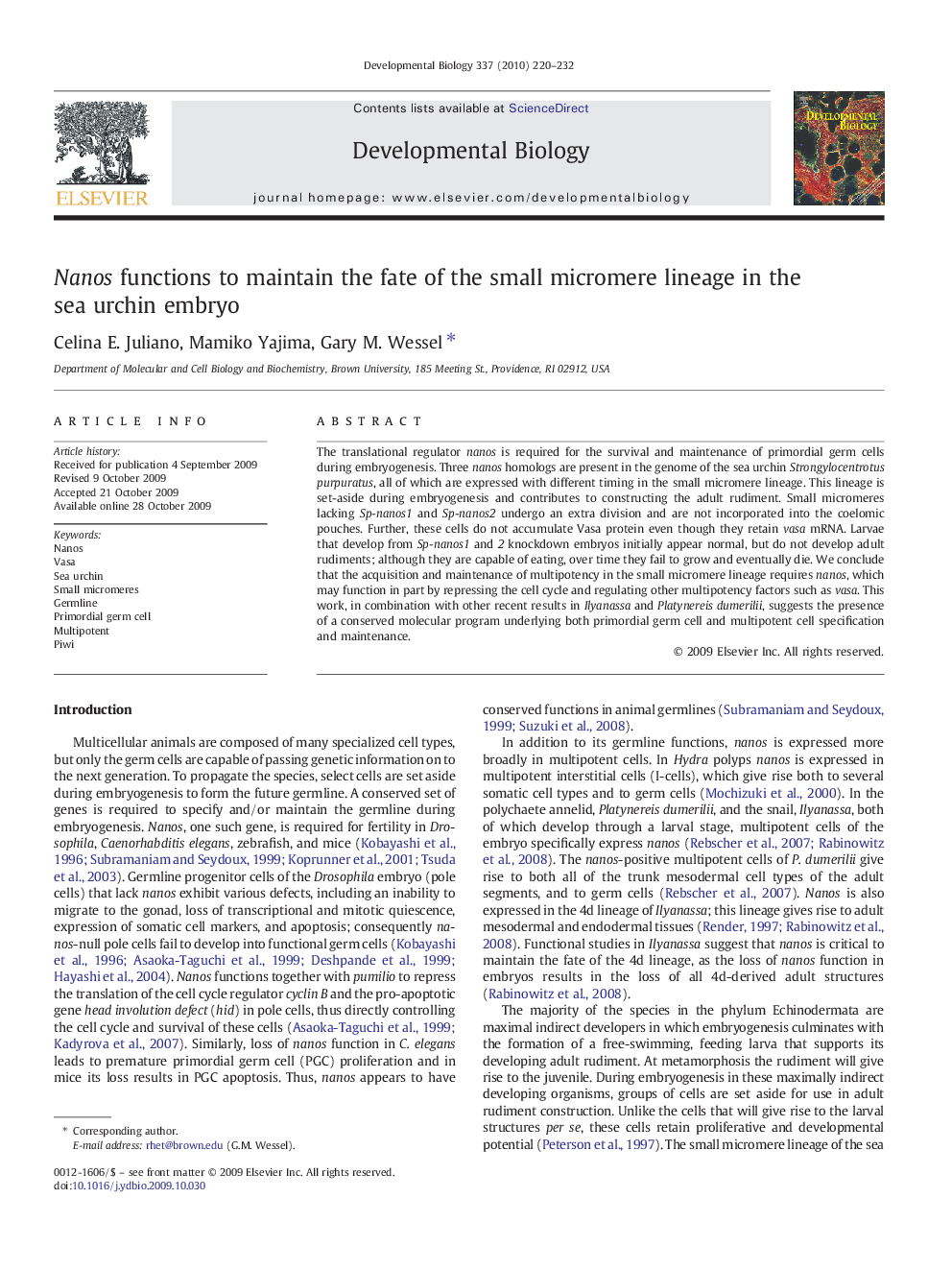| Article ID | Journal | Published Year | Pages | File Type |
|---|---|---|---|---|
| 10933074 | Developmental Biology | 2010 | 13 Pages |
Abstract
The translational regulator nanos is required for the survival and maintenance of primordial germ cells during embryogenesis. Three nanos homologs are present in the genome of the sea urchin Strongylocentrotus purpuratus, all of which are expressed with different timing in the small micromere lineage. This lineage is set-aside during embryogenesis and contributes to constructing the adult rudiment. Small micromeres lacking Sp-nanos1 and Sp-nanos2 undergo an extra division and are not incorporated into the coelomic pouches. Further, these cells do not accumulate Vasa protein even though they retain vasa mRNA. Larvae that develop from Sp-nanos1 and 2 knockdown embryos initially appear normal, but do not develop adult rudiments; although they are capable of eating, over time they fail to grow and eventually die. We conclude that the acquisition and maintenance of multipotency in the small micromere lineage requires nanos, which may function in part by repressing the cell cycle and regulating other multipotency factors such as vasa. This work, in combination with other recent results in Ilyanassa and Platynereis dumerilii, suggests the presence of a conserved molecular program underlying both primordial germ cell and multipotent cell specification and maintenance.
Related Topics
Life Sciences
Biochemistry, Genetics and Molecular Biology
Cell Biology
Authors
Celina E. Juliano, Mamiko Yajima, Gary M. Wessel,
